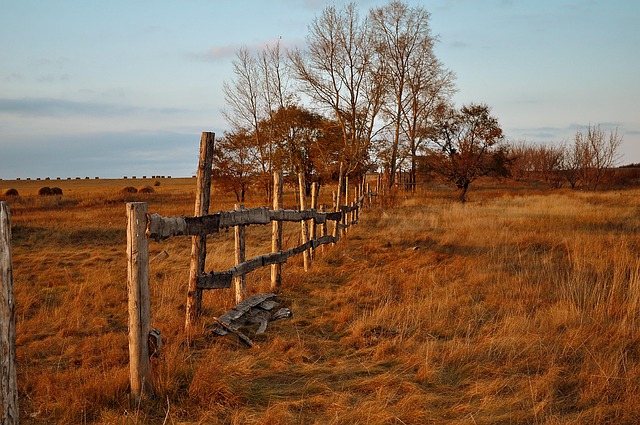In New Bedford, a well-maintained fence is not just an enhancement to your property but also a practical investment. This comprehensive guide delves into the essential aspects of fence repair and installation, catering to both homeowners and professionals. We explore common issues plaguing New Bedford fences, offering insights on identifying and addressing problems. Additionally, we provide a detailed overview of materials, styles, and installation processes, ensuring you make informed decisions. Learn efficient repair techniques and vital maintenance tips to extend the lifespan of your fence, enhancing both functionality and aesthetics.
- Understanding Fence Needs: Common Issues in New Bedford
- Choosing the Right Fence: Materials and Styles for Your Property
- Installation Process: Step-by-Step Guide for a Solid Fence
- Repair Techniques: Fixing Fences Efficiently and Cost-Effectively
- Maintenance Tips: Keeping Your New Bedford Fence Long-Lasting
Understanding Fence Needs: Common Issues in New Bedford
In New Bedford, understanding your fence’s unique needs is essential for effective repair and installation. Common issues include rot due to high moisture levels, especially in older wooden fences, and damage from extreme weather conditions such as storms and strong winds. Additionally, local soil conditions can impact fence stability, with heavy clay or sandy soils often requiring specific treatment to prevent settling and warping.
The diverse climate presents challenges like winter freezing and thawing cycles, which can cause fencing materials to expand and contract, leading to loose posts and panels. Moreover, urban environments pose risks from nearby construction projects, vehicles, and foot traffic, all of which can contribute to fence damage. Identifying these issues early is crucial for proactive maintenance, ensuring the longevity and integrity of your fence structure.
Choosing the Right Fence: Materials and Styles for Your Property
When considering fence repair or installation, choosing the right material and style is crucial to enhance your property’s aesthetics and security. Factors like climate, budget, and personal taste play a significant role in this decision. Wood, for instance, offers a classic look but requires regular maintenance due to its susceptibility to rot and pests. Vinyl fences are low-maintenance alternatives, with various colors and styles available, making them popular choices for many homeowners. Alternatively, chain link fences provide security at a lower cost, ideal for areas requiring visibility or where pets roam freely.
The style of your fence also matters. Traditional picket fences offer a charming, classic appeal, while privacy fences are perfect for creating a serene outdoor space. Wrought iron fences exude elegance and durability, suitable for grand estates or modern homes seeking a touch of sophistication. Modern vinyl or composite fences come in sleek designs, mimicking wood or metal without the upkeep. Consider your property’s unique character and surroundings to select a fence that not only complements but also enhances your outdoor environment.
Installation Process: Step-by-Step Guide for a Solid Fence
The installation process for a new fence begins with careful planning and preparation. First, measure and mark the perimeter of your desired fence line to ensure accuracy. Then, clear the area of any debris or obstructions that might interfere with construction. Digging posts holes is the next step; these should be deep enough to support the fence’s weight. Place your fence posts in the holes and use concrete to secure them firmly in place. Allow the concrete to set completely before proceeding.
Once the posts are stable, attach the fence panels or boards to them. This can be done using brackets or nails, following manufacturer guidelines for the best results. Ensure each panel is securely fastened and level before moving on to the next. Regularly check your work as you progress to catch any mistakes early. The final step involves adding a top rail, which not only completes the look but also provides extra support for the fence.
Repair Techniques: Fixing Fences Efficiently and Cost-Effectively
When it comes to repairing fences, there are several techniques that New Bedford fence contractors employ to ensure efficient and cost-effective results. One common method is post replacement, which involves removing and replacing rotted or damaged fence posts. This process not only strengthens the fence but also restores its structural integrity. Contractors use specialized tools to carefully extract old posts and insert new ones, ensuring they are firmly secured in the ground.
Another popular technique is rail repair or replacement. Fences with missing or damaged rails can be restored by either straightening bent rails or swapping out old ones for new. This work requires precision to maintain the fence’s overall stability and alignment. By utilizing these repair techniques, New Bedford professionals can extend the lifespan of fences while keeping costs down for property owners.
Maintenance Tips: Keeping Your New Bedford Fence Long-Lasting
Regular maintenance is key to ensuring your New Bedford fence remains in top condition for years to come. Start by inspecting it regularly for any signs of damage, such as loose boards, rusted posts, or broken hinges. Addressing issues early can prevent minor problems from escalating into major repairs.
Keep the fence clean and free of debris by brushing off leaves and dirt. Apply a fresh coat of paint or sealant every few years to protect it from the elements, especially if it’s made of wood. Ensure proper drainage around the fence to avoid water damage, and consider trimming nearby trees and shrubs to prevent branches from causing stress or damaging the fence structure.
